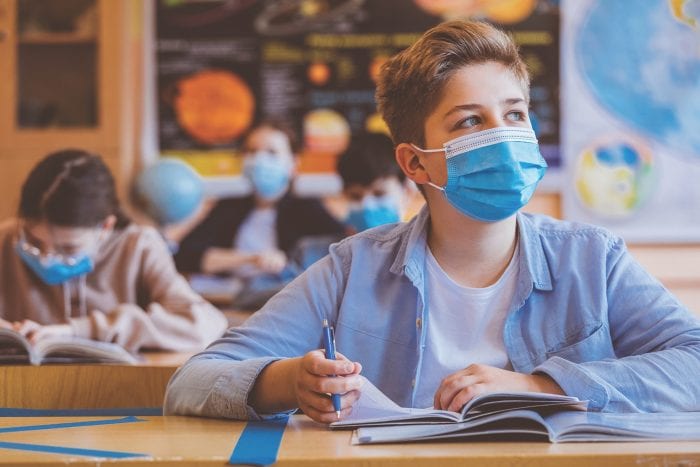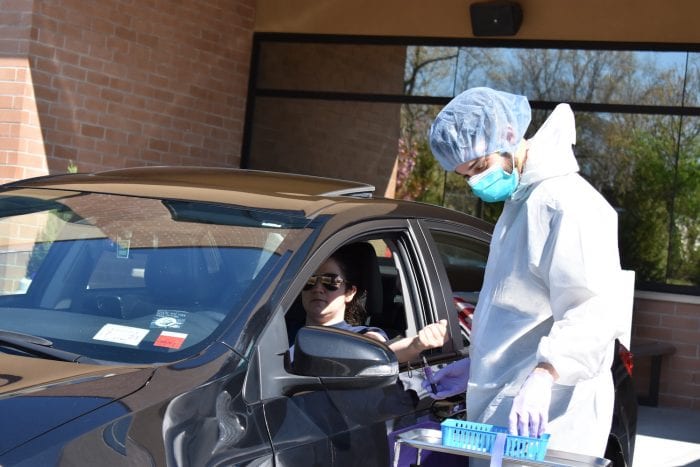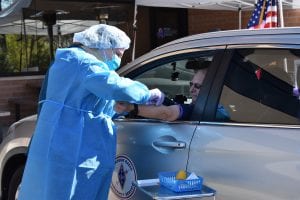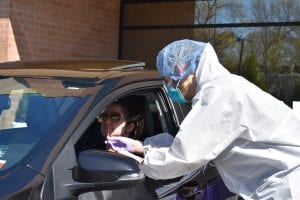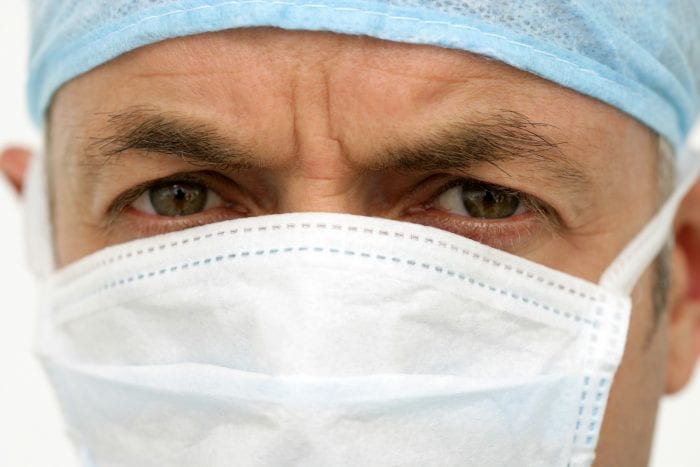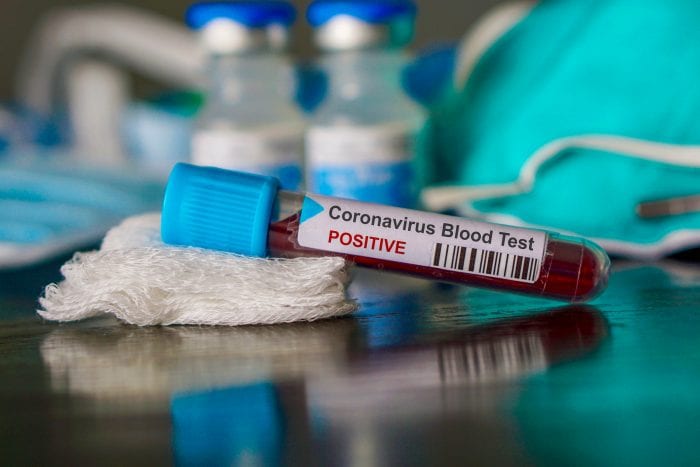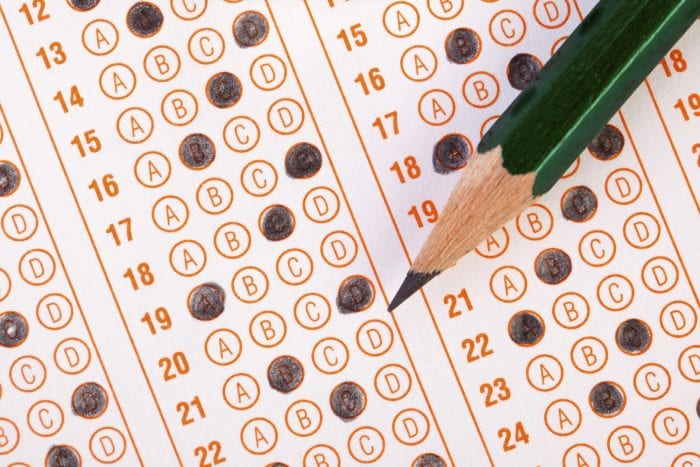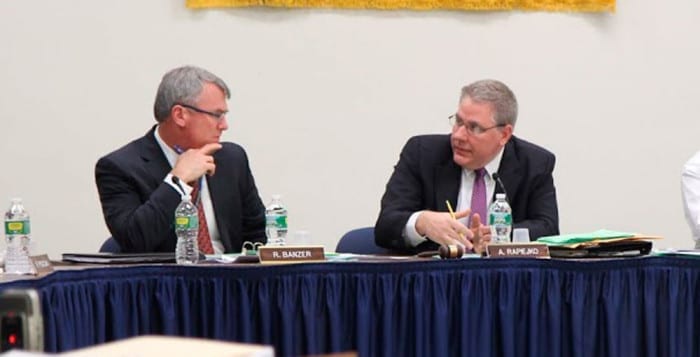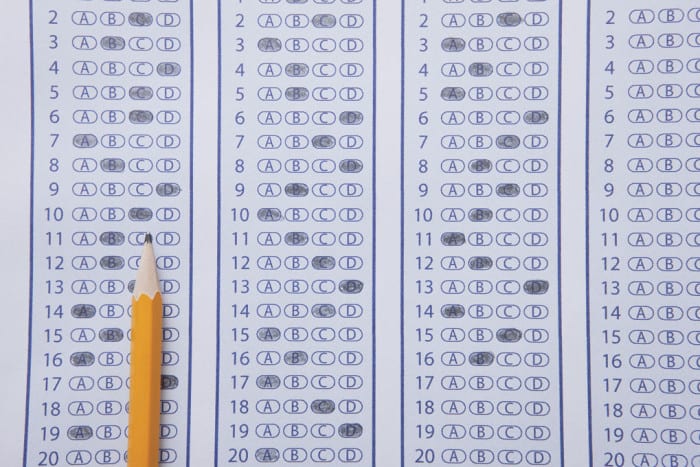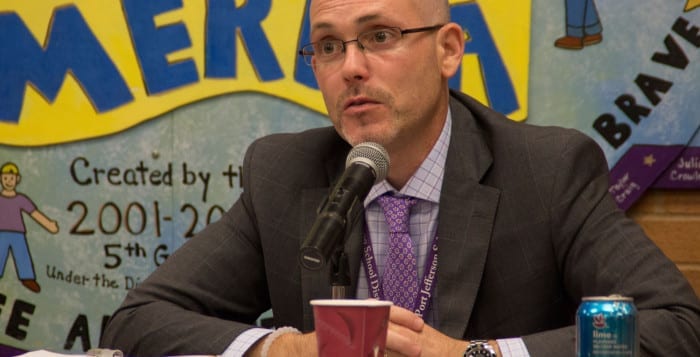As the percentage of positive tests throughout the county continues its rapid climb to about 3.5% from around 1% in the last 10 days, Suffolk County has started its first school-based testing in Hampton Bays and Riverhead.
Those two school districts, where county and school officials are testing students who have received permission from their parents, recently started testing students for COVID-19 in an effort to monitor and reduce the spread of the virus.
Hampton Bays has a 6.5% positive testing rate over the last five days, while Riverhead has a 5.6% positive rate for that same period, according to County Executive Steve Bellone (D).
About 400 tests for students, teachers and faculty in Hampton Bays, which started on Thursday, Nov. 19, will be administered before the Thanksgiving holiday.
Four employees from Suffolk County are on site to administer the rapid tests, which provide results within 15 minutes.
“The goal in launching this free school-based testing program is to be proactive in an effort to get control of these numbers in the county,” Bellone said on a conference call with reporters. More testing will help the county locate the potential source of community spread, helping to enable schools and businesses to remain open.
The school testing is part of a “comprehensive effort to get our arms around these nubmers and stop the surge in the county,” Bellone said.
The Riverhead tests will start on Friday, Nov. 20. The county hasn’t determined how many tests it will administer at that location. The Riverhead and Hampton Bays testing kits came from New York State.
Additional pop up testing will occur in the Hamptons Bays that Stony Brook South Shore Hospital will administer over the next two weeks, which will continue on an as-needed basis.
Bellone said the spread of positive tests is occurring throughout the county and isn’t localized in any one region.
“What we’re seeing is the spread is happening everywhere across the county,” Bellone said. “The announcement today is part of a larger, comprehensive effort to get community spread under control.”
While schools in Manhattan have closed in response to a rise in positive tests, Bellone said concerted efforts in the county may prevent the eastern part of Long Island from the same fate.
These efforts include increasing the number of contact tracers to 150 today from just 30 before this surge began. The Suffolk County Police Department is also increasing enforcement around the holiday about social host laws and gathering limits below 10 people. The Suffolk County Department of Health is also working through social media to remind residents about their public health responsibilities.
Bellone reiterated that some of the increase in cases in the county came from gatherings around Halloween. With Thanksgiving next week, which typically brings multiple generations of families together, the result from these gatherings could continue to increase the number of positive tests.
Bellone said the county would continue to follow local data. If other communities also have positive test rates above the average in the county over a long enough period of time, the county will “engage with those school districts” as it has with Hampton Bays and Riverhead, Bellone said.
At this point, the county has no plans to conduct additional testing after Thanksgiving.
“We’re not seeing the spread happening inside the school,” Bellone said. “The effort we are engaged in today is part of a larger, comprehensive effort trying to get a handle on this in the county. It’s not, per se, an issue about the schools. We are looking at certain communities” where the positive rate is above the average for the community.

